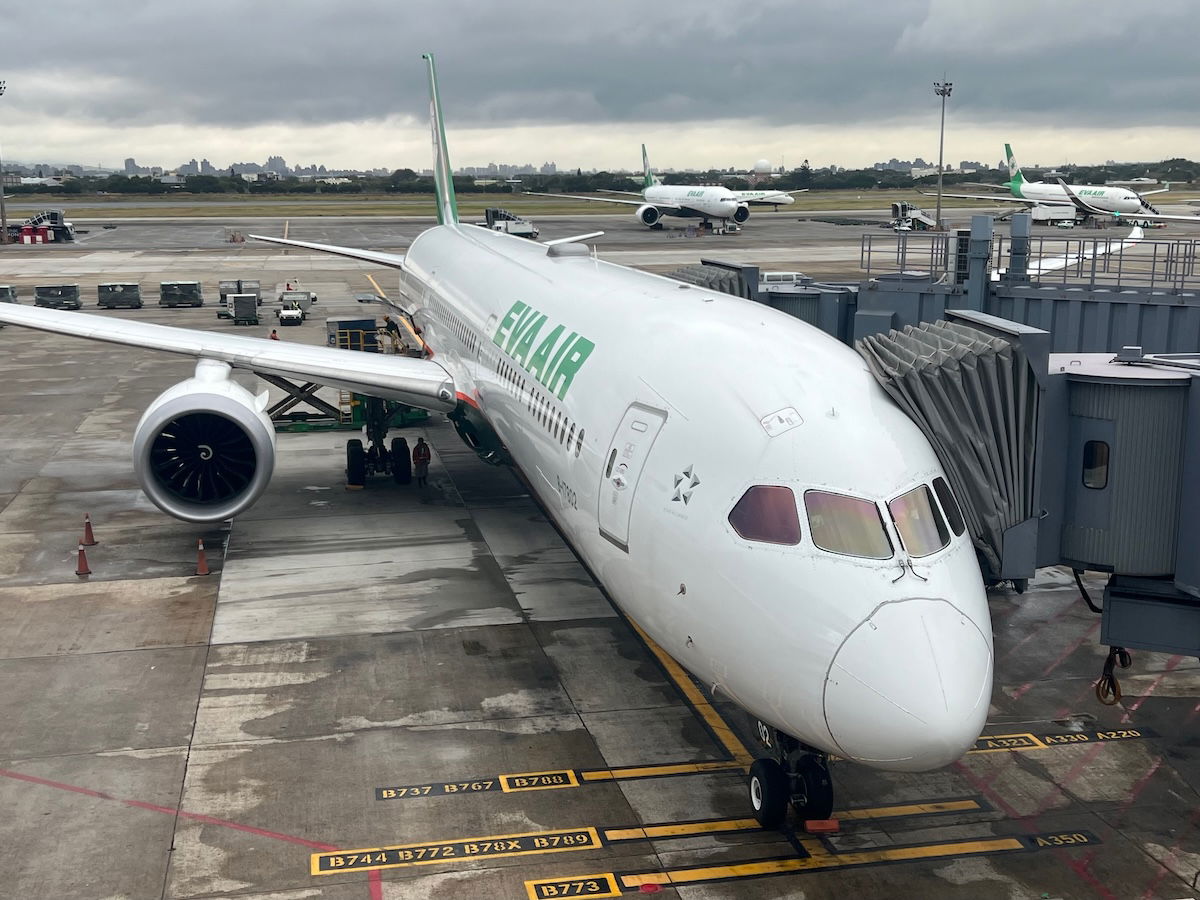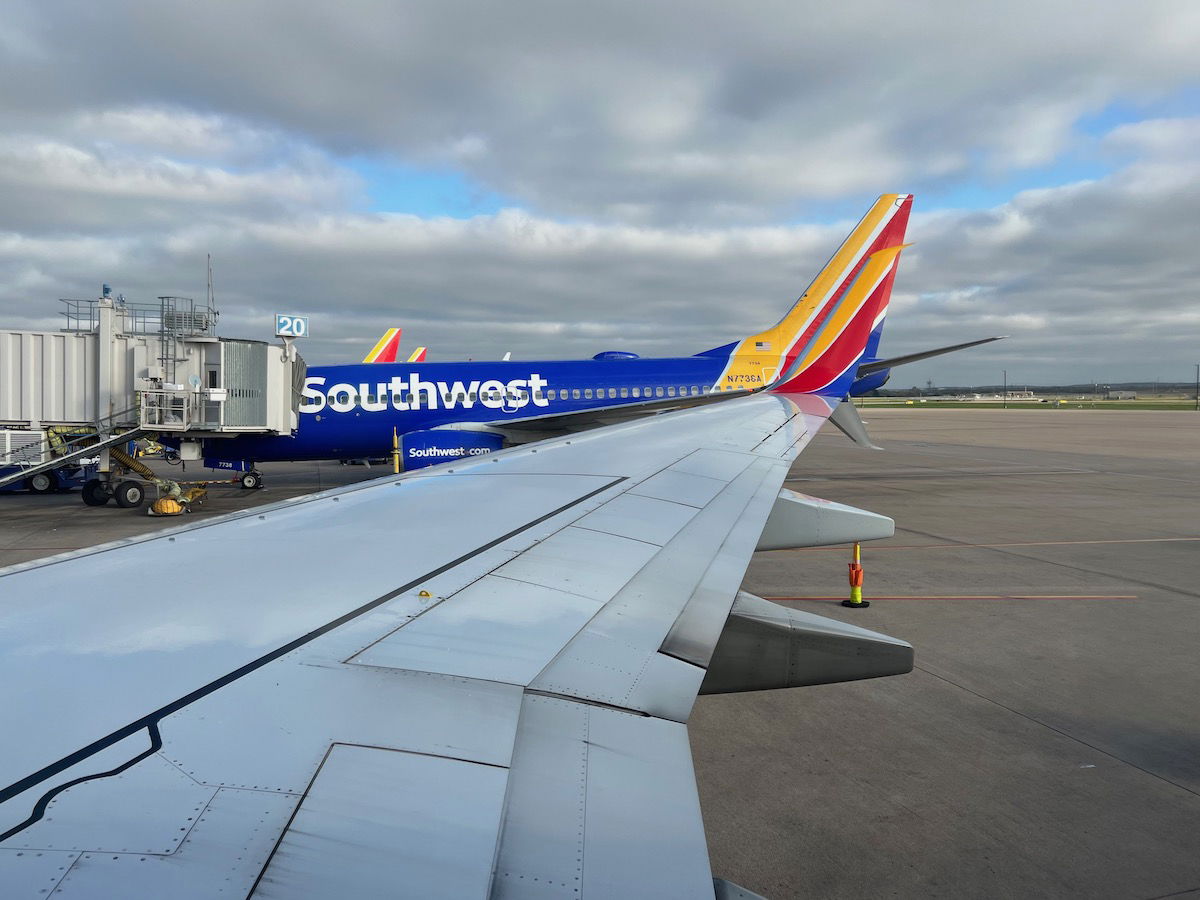Southwest Airlines is currently undergoing a major transformation, which includes charging for checked bags, introducing assigned and extra legroom seating, etc. It goes beyond that, though, as Southwest is also increasingly launching airline partnerships.
Earlier this year, we saw Southwest launch its first partnership with Icelandair, and the expectation is that Southwest will fly to Iceland. Then we saw the airline announce China Airlines as its second partner, and now we’re seeing the airline reveal its third partner. This carrier is actually based at the same airport as the first partner in Asia, which makes you wonder about the strategic rationale.
In this post:
New Southwest & EVA Air interline agreement
Southwest Airlines and EVA Air have introduced an interline agreement, which kicks in effective immediately. With this, travelers can start booking tickets that include travel on both Southwest and EVA Air. This is initially available at four transpacific gateways — Chicago (ORD), Los Angeles (LAX), San Francisco (SFO), and Seattle (SEA).

As Southwest describes it, “this partnership is another step forward as we continue our mission to bring more choices (and new horizons) to our Customers.” For context, EVA Air belongs to Star Alliance, and is based at Taipei Taoyuan (TPE). Funny enough, China Airlines is also based at that airport, and is the biggest competitor to EVA Air. So it’s interesting to see how Southwest’s two first Asian partners are based at the same airport.
For now this partnership only includes an interline agreement. This is the most basic level of cooperation two airlines can have. There’s no codeshare agreement, or loyalty collaboration, or anything. The interline agreement simply makes it possible to book a ticket that includes travel on both airlines. This possibility is already available online, on EVA Air’s website.
There’s not really a whole lot to this partnership
Southwest is still new to the world of airline partnerships, so it’s interesting to see the approach the carrier is taking. For example, Icelandair was announced as the first partner, and it seems pretty clear the airlines are actually planning a higher level of cooperation, eventually having a codeshare agreement, frequent flyer reciprocity, etc.
However, it’s interesting to now see Southwest partner with both SkyTeam’s China Airlines and Star Alliance’s EVA Air. These airlines are two huge competitors, so personally I wouldn’t read too much into this partnership.
For example, EVA Air and Alaska Airlines also have an interline agreement that lets you book tickets including travel on both airlines. However, those airlines don’t otherwise don’t have any sort of commercial cooperation beyond that.
I can see big upside to Southwest establishing close partnerships with foreign carriers that enhance the value proposition of the loyalty program. However, just picking up low pro-rated interline revenue doesn’t exactly seem like a strategy that will materially impact financial performance. Then again, with Southwest no longer being a “premium” airline that includes all kinds of services, I guess the company is more happy with that than in the past, and there’s not much downside to this.

Bottom line
Southwest Airlines and EVA Air have just launched a partnership. In reality, this is the most basic form of cooperation you can have, as this is simply an interline agreement that allows you to book travel including flights on both airlines (while also being able to check bags).
It’s interesting how Southwest’s first two interline partners in Asia are both based in Taipei, which suggests to me that these agreements will likely be pretty casual.
What do you make of Southwest & EVA Air partnering?





It is more to drum up traffic from Taiwan onto their metal
I guess they are just building 1 brick at a time without strategy
Seems to me like WN is throwing sht at the wall to see what sticks. They were unique before and I suppose they still are but in a weird way.
They don't have a premium product, lounges or a compelling loyalty program so they aren't a competitor to the big three or Alaska. They're not competitive on price with LCCs although their product is similar. And these partnerships just don't make a lot of...
Seems to me like WN is throwing sht at the wall to see what sticks. They were unique before and I suppose they still are but in a weird way.
They don't have a premium product, lounges or a compelling loyalty program so they aren't a competitor to the big three or Alaska. They're not competitive on price with LCCs although their product is similar. And these partnerships just don't make a lot of sense.
I flew spirits big front seat from OAK to SAN last month for less than half the price of WN and it is a superior product to anything WN offers. It will be interesting to see how their schizophrenic strategy plays out.
Southwest has absolutely zero to lose here. It's just an interline, and in theory, you'd want as many interline partners as possible.
When they start trying to do immunized joint-ventures, then they'll have to be a lot more strategic and exclusive, but this isn't any different from the Big-3 US carriers, who interline with most major airlines worldwide, even direct competitors.
Honestly, this makes me want to have Southwest partner with Air India. Air India's partner selection is all over the place (AS/UA to SFO, UA to ORD/EWR, and DL/B6 to JFK). With southwest, they can probably align networks at SFO and their upcoming LAX route. More importantly, it means a pairing of two shitty airlines so we all have more fodder to laugh at, eh?
Bring Southwest into Star Alliance!
This is weird, exactly zero number of people are going to go to southwest's website to search for flights to Asia.
And with the exception of Seattle, those are all United hub cities.
The combo makes about as much sense as tossing a handful of skittles into a bag of popcorn.
How does United feel about this?
It could very well just be a chance to try to boost its bottom line any way it can. Yet, could it also be that it wants to see which one is better CI or BR and it may want to have a JV with one of them? Could WN want to join one of the three major alliances in the future? It probably does not have much of a strategy at the moment then?
Isn't it interesting how both the Asian partners are based at the same airport?
I like Eva… but this doesn’t make me look more favorably at them or Southwest. I’m guessing this is for PHX connectivity, though really, Eva should have partnered with AA for that.
EVA isn’t adding PHX. Southwest already had that covered with its CI agreement.
*snif*... southwest is finally a grown up airline?
Southwest doesn't have a ton of great options as feed for international connections. Most of their hubs don't line up with international service. See: BWI in lieu of IAD, DAL instead of DFW, MDW instead of ORD, etc. Why on earth would anyone want to purposely book an itinerary requiring a landside connection between airports?
Southwest does fly to ORD. So, some people will use this service. It's really just about Southwest finally acting like a legacy and doing things it should have done years ago.
ORD is a Star Alliance hub and WN only flies 14 daily flights there. There are no WNBR connections at ORD so its weird they even mentioned it in the press release. I don't see how any airline benefits.
Yawn.
Putting lipstick on the new SW pig.
I think the bigger implication here is that PHX-TPE is coming. They saw Starlux and China Airlines launch within months, and they want in on the semiconductor traffic.
They are not going to fill 700 seats a day with "semiconductor traffic."
Southwest is a willing (too willing?) partner right now. Both EVA and China Airlines are looking for US partners, as their US alliance partners (UA and DL, respectively) offer them very little and don't really value their partnerships that much. So, why not?
Largely because of the joint ventures that UA and DL have with ANA and KE respectively.
UA and DL are incentivized to sell seats via TYO or ICN with ANA and KE connections since they can make 100% of the revenue by doing so.
Codeshare flights with BR or CI would technically be competitors to them. That's why you don't see close alignment.
Quickly find a partner that I can burn my RR on so I can dump WN forever.
If they are becoming like the legacy 3, there are 3 better airlines to fly with.
EVA AIR on their Instagram also teased new destinations. The Points Guy, back in 2024, reported that the executives at EVA AIR eyed new routes to Boston Logan, Washington Dulles, and Dallas (before EVA AIR officially announced Dallas). When looking at the Instagram post, the only three comments EVA AIR replied to (with a "✈") are "Where?", "Better be Boston!", and "Washington DC??", signifying that EVA AIR will most likely announce expansions into Boston and DC!
Southwest is no longer the weird airline so it's fine. In fact, they should consider EVA Air taking an ownership stake in Southwest and then changing the name to EVA Air (USA).
If that were to happen, the larger US airlines could be United, Delta, American, Alaska, and EVA Air. If that were to happen, how about Starlux taking an ownership stake in Alaska so that the brands would be United, Delta, American, Starlux/Hawaiian, and EVA Air.
You have a misconception that these Taiwanese carriers have a lot of money.
Foreign entities cannot have more than a 50% aggregate stake in a US airline, and only only the first 25% of that can be voting stock/stake (which is why you almost never see a foreign investment of more than 25%).
So either way, no matter how much EVA/Starlux would put in under that kind of scenario, they'd never get a controlling stake in any US airline, much less a name change.
I don't understand WN's approach to arbitrarily adding partnerships that "connect" at airports that WN doesn't have any scale? How many WN connections exist in the airports listed, and 3/4 airports are already Star Alliance hubs which makes this make even less sense.
It makes about as much sense as the United/JetBlue partnership at JFK.
I do think it's quite interesting though.
BR/CI have largely operated in a different playing field due to how the Asia TPAC JVs focus a lot on JAL/ANA/KE, so BR and CI have never been treated as tier 1 or even tier 2 partners. Codeshare is extremely limited both on the US and Asia side and often priced very poorly.
Southwest is sort of similar in that they operate a very different network from the...
I do think it's quite interesting though.
BR/CI have largely operated in a different playing field due to how the Asia TPAC JVs focus a lot on JAL/ANA/KE, so BR and CI have never been treated as tier 1 or even tier 2 partners. Codeshare is extremely limited both on the US and Asia side and often priced very poorly.
Southwest is sort of similar in that they operate a very different network from the big 3 legacy carriers. So I can see this setup working out nicely to boost US feed.
I think it's more weird than interesting but perhaps there is some sense to your post. BR and CI are giving the finger to Delta and United. like here is my new girlfriend, she may be ugly and her breath smells like pretzels and peanuts but she treats me good
@Ivan, lol